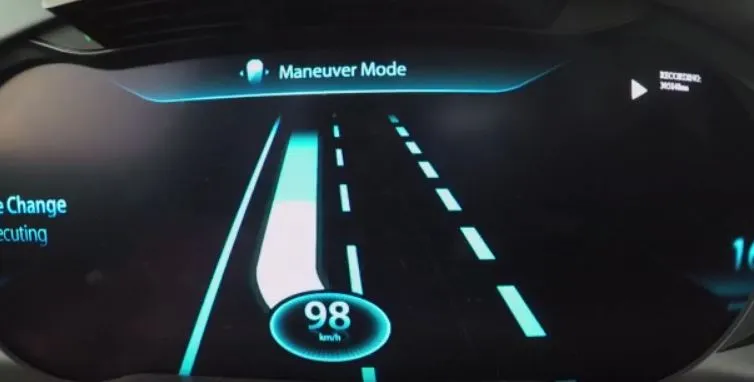Continental Concepts for Automated Driving: Simulator, Mutimodal & Control
Posted on June 11, 2017 by Bryan Jonston

Continental is working on many ways to facilitate self-driving including testing, manual driving, simulation and components.
For the sensitive transition process at the end of an automated driving phase, Continental is already working on innovative concepts that require extensive testing – both in the lab and on the road – before they can be used for real. Because it doesn’t matter how good the technology is, human behavior will always play a critical role in the transition to fully automated driving (level 5). Extensive testing performed by test subjects, who are not trained test drivers, enables a realistic estimation and evaluation of the technology.
For real-life driving out on the roads, Continental uses a method that gives the test subjects the feeling that they are working with a highly automated system. The extensively prepared test vehicle uses numerous sensors to record the behavior of the driver and analyze their reactions. The test subject sits behind a dummy steering wheel on the left of the vehicle; sitting at the actual steering wheel on the right is a specially trained driver.
During manual driving phases, the trained driver is informed of the test subject’s actions via a combiner head-up display and converts these to actual maneuvers. During automated driving phases, the trained driver takes full control of the steering wheel, creating the illusion of highly automated driving. This method means that, even today, certain elements of the human–machine interface for automated driving can be tested in real-life driving situations. This is because, precisely due to the interaction required, highly automated test drives on public roads, without trained test drivers, can put test subjects at risk. The results are helping the developers at Continental to formulate the necessary control algorithms for fully automated driving.
The driving simulator – Continental’s “ergonomics lab” – allows the researchers to observe and analyze their test subjects in even greater detail, for example by measuring their heart rates or by precisely recording their eye movements. This data is gathered without any outside interference and enables the researchers to establish whether the test subject is comfortable or whether a particular situation is causing them stress. The lab environment also means that the test subjects can be put under much more pressure, for example to test their response to hazardous situations and critical maneuvers that would not be possible on real-life roads.
Elements of holistic human–machine interaction
Already, Continental is employing multimodal – that is, multisensory – solutions to transfer information to drivers. Visual presentations via a range of displays in the cockpit, head-up displays, or changes in the color of LED light strips are supported by audio signals that, for example, inform drivers about the end of an automated driving phase or alert drivers via a specific audio signal. If the interior cameras establish that the driver is still not paying attention, haptic elements are activated – for example, the seat starts to vibrate or the seat-belt tensioner tightens.
To control automated driving phases, Continental has also developed a control element designed to rule out the risk of confusion regarding the drive modes and to further enhance transparency. “With our test series and products, we are continuously improving the holistic human–machine interface to ensure seamless communication and to lay the foundations for ensuring that drivers know exactly what their responsibilities are at any given time and what the system is currently doing,” says Meier-Arendt.
Continental is developing and producing the necessary components and systems for automated driving worldwide – in the U.S.A. as well as in Japan, China, and Europe. The engineers involved are working on six key elements: sensor technology, cluster connectivity, human-machine dialog, system architecture, reliability and the acceptance of automated driving.